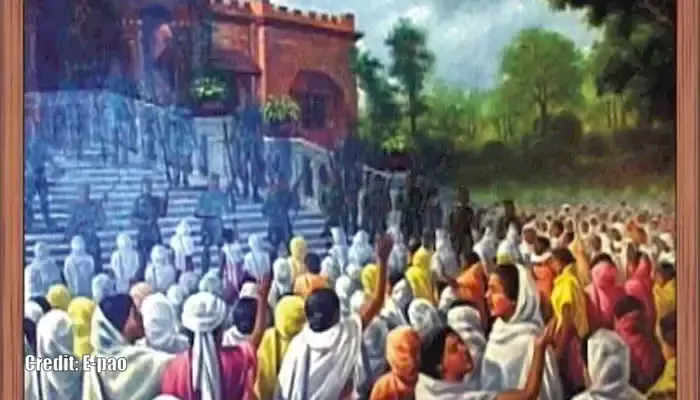
Twice in thirty-five years, Manipuri women turned trade into resistance and forced the British to back down
History often remembers the battlefield, the courtroom, or the throne. But in Manipur, it was the marketplace that became a catalyst for a movement. And it wasn’t warriors or royals who took command — it was the women.
To understand what happened when Manipuri women flooded the streets in protest, we need to start not with a war but with a rhythm. The rhythm of trade, effort, and resilience.
Generations of women established Nupi Keithel — the renowned women’s market in Imphal — not merely as a place for selling rice, cloth, and produce but as a centre to unite the community. They were the breadwinners. The negotiators. The guardians. So, when injustice occurred, they didn’t wait for leadership. They took the lead.
This is the story of Nupi Lan—literally, “Women’s War”—where thousands of women challenged colonial authority, not once but twice, first in 1904 and then again in 1939. And both times, they emerged stronger.
After Manipur came under British control in 1891, the colonial administration imposed laws that exhausted the people. When two British bungalows were burned down, the authorities resorted to a brutal solution — forced labour. Men were ordered to transport timber from distant Kabow Valley to rebuild the British quarters. It wasn’t a request. It was a revival of Lallup — a severe system where men were taken from their homes to work without pay.
Already managing markets and households while the men were away, they rose up. They gathered in thousands, filled the streets, and marched directly to the colonial officers. The protest spread quickly, spilling into every corner of Imphal. For a week, the women stood firm. Despite attempts to push them back, they remained in place. Eventually, the British issued the order to withdraw.
Their message was clear: we’re not backing down.

Three decades later, the anger boiled over again.
The British exported vast quantities of rice from Manipur, even during harvest season. Marwari traders supported by the administration purchased local stocks, leaving shelves empty and stomachs unfilled. Prices increased. Mills closed. Families endured hardship.
This time, the women did more than just protest. They took control.
On 12 December 1939, thousands marched to the Durbar office. The Maharaja was away, so they demanded answers from the officials present. One official was even detained until a telegram was sent to bring back the Maharaja. At its height, over 4,000 women occupied the space.
The administration panicked, summoned soldiers, and shut down Nupi Keithel. But the women refused to relent. For 14 months, they resisted attempts to sell the market to outsiders. They protested, camped, shouted, and persisted.
Eventually, an export ban was enforced. They had won — once again.
These weren’t just small protests; they were political earthquakes led by women who had grown up standing their ground. The Nupi Lan didn’t merely halt harmful policies — it sparked something much larger.
It transformed economic protests into demands for political reform, ignited the rise of leaders like Hijam Irabot, and laid the groundwork for future movements, from food shortages to human rights violations.
Walk through Nupi Keithel today, and you’ll see more than just goods and money exchanging hands. You’ll notice posters, slogans, and signs of protest tucked between jars of pickles and heaps of vegetables. The spirit of resistance still endures.